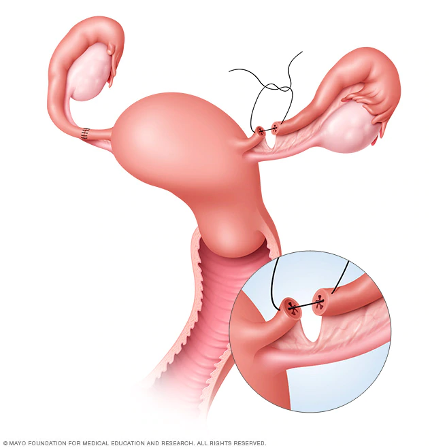Tubal Reversal At Denver Fertility
Tubal Reversal Procedures
The type of microsurgical technique used to repair the fallopian tubes depends on how much of the tube segments are left. Your physician will be able to determine this by your operative report obtained from the surgeon who performed your tubal ligation. If an operative report is not available, a screening laparoscopy can be performed to view your fallopian tubes.
Tubal reversal through microsurgical tubal anastomosis
Usually there are two fallopian tube segments remaining after tubal ligation surgery – the proximal tubal segment that is connected to the uterus and the distal tubal segment that ends with the fimbria next to the ovary. The procedure that connects these separated parts of the fallopian tube is called microsurgical tubo-tubal anastomosis. Other terms used to describe this procedure are microsurgical tubal reanastomosis, microsurgical tubal reversal or microsurgical tubal repair.
After opening the blocked ends of the remaining tubal segments, a narrow flexible stent is gently threaded through the fallopian tube segments and into the uterine cavity. This ensures that the fallopian tube is open from the uterine cavity all the way to the end near the ovary.
Microsurgical sutures are used to precisely align the muscular portion and outer layer. The tubal stent is then gently withdrawn from the end of the fallopian tube.









